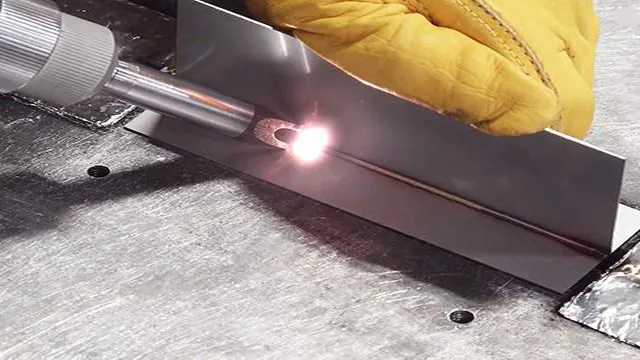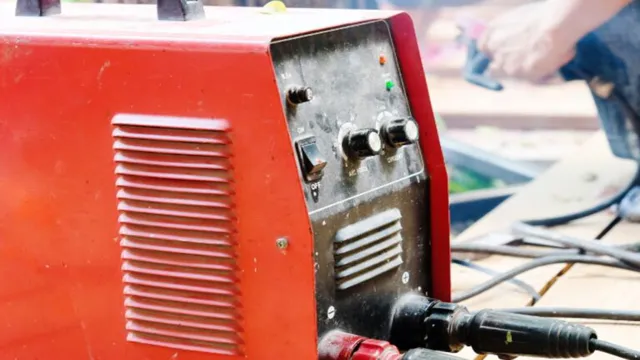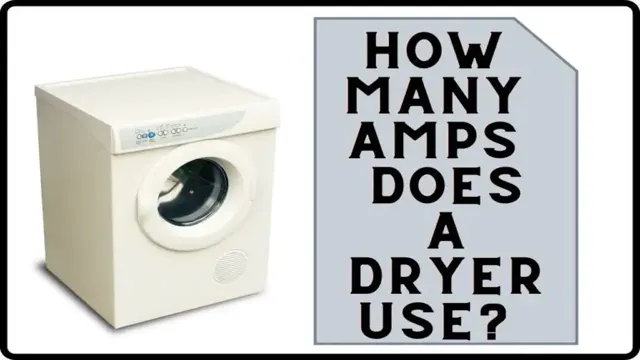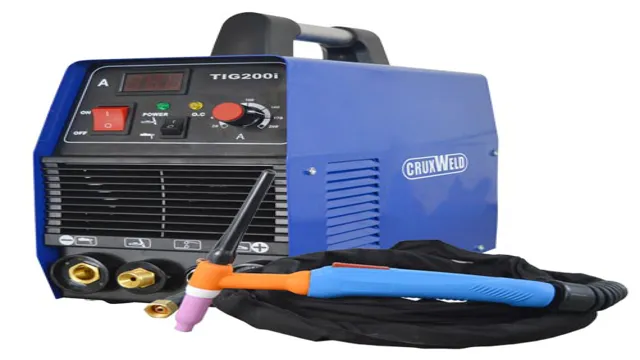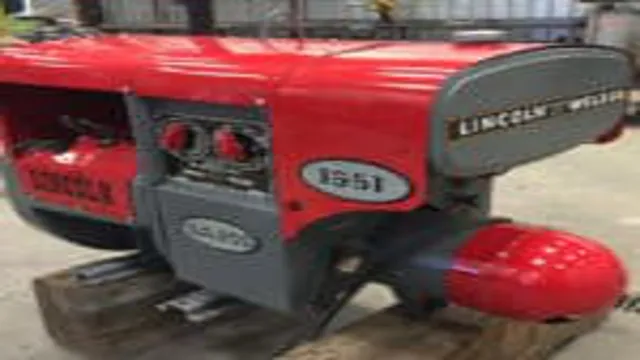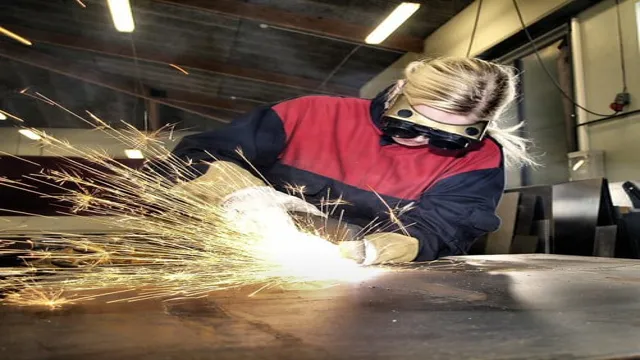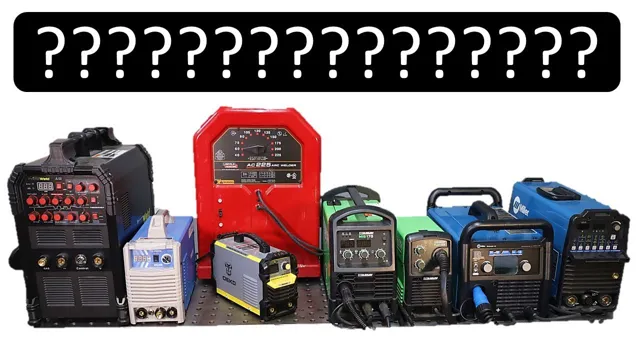What Welding Helmet Should I Buy?: A Comprehensive Guide to Choosing the Best Welding Helmet for Your Needs
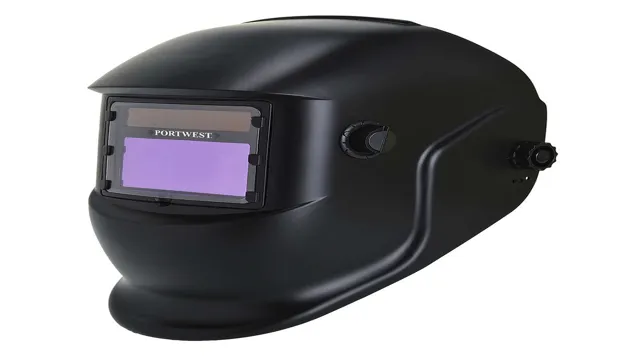
A welding helmet is an essential piece of equipment for any welder, but choosing the right one can be overwhelming. With so many options available, it’s challenging to determine which helmet will provide the best protection and comfort while welding. It can be tempting to purchase the first welding helmet you come across, but taking the time to choose the right one can make a significant difference in your welding experience.
A proper helmet should be comfortable, provide adequate protection, and be easy to adjust. Think of it like buying a pair of shoes. You wouldn’t buy the first pair you see without trying them on, right? The same principle applies to welding helmets.
It is vital to find a helmet that fits your head comfortably and is adjustable to ensure a snug fit. Moreover, choosing a helmet with the right lens shade is crucial. The lens shade determines the level of protection from harmful ultraviolet and infrared light, which makes it necessary to check with local regulations and the welding process you’ll be using.
In this blog post, we’ll guide you through the process of choosing the right welding helmet to ensure maximum protection and comfort during welding.
Consider Your Welding Processes
When it comes to purchasing a welding helmet, it’s important to consider your welding processes. Different welding techniques require different levels of protection, so you’ll want to choose a helmet that provides adequate coverage for the welding you’ll be doing. For example, if you’ll be doing primarily MIG or TIG welding, which produce less UV and infrared rays, you may be able to get away with a lighter helmet.
However, if you’ll be doing more intensive processes like stick welding or plasma cutting, which produce more intense light and heat, you’ll want to choose a helmet with a higher shade range and better overall coverage. Keep in mind that a higher shade level doesn’t always guarantee better protection, so do your research and find a helmet specifically designed for the welding processes you plan to use. Whether you’re a professional welder or just starting out, choosing the right welding helmet can make all the difference in safety and productivity.
So, take some time to consider your welding needs and invest in a quality helmet that will keep you protected on the job.
TIG welding
If you’re considering TIG welding, it’s essential to think about your welding processes. TIG welding, also known as gas tungsten arc welding, is a precise and clean welding technique commonly used in industries such as aerospace, automotive, and precision manufacturing. However, the precise nature of TIG welding means that it can be slow and time-consuming, making it less suitable for high-speed production environments.
Additionally, it requires a higher degree of skill and training compared to other welding processes. While TIG welding produces high-quality welds with excellent precision, it may not be the best option for all situations. Consider your needs and the specific applications you require before choosing TIG welding for your projects.
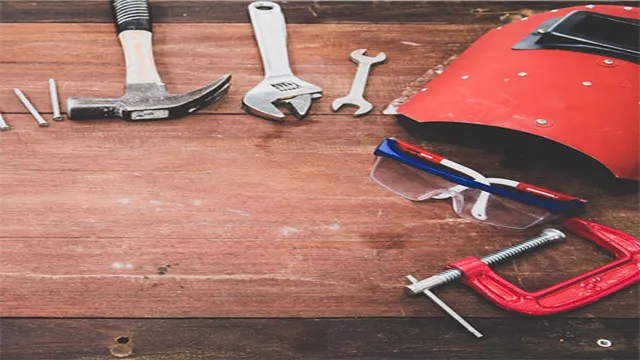
MIG welding
MIG welding is a commonly used process in the welding industry, but it’s important to consider your welding processes before diving into it. MIG welding works by using a wire that’s fed through a gun and melted to join two pieces of metal together. While this process can be quick and efficient, it’s not always the best choice for every welding project.
Before deciding to use MIG welding, consider the materials being used, the thickness of the metal, and the welding environment. It’s also important to choose the right type of gas for the job. Argon and carbon dioxide are commonly used gases for MIG welding, but depending on the metal being welded, different gases may be required to achieve the best results.
By taking the time to consider your welding processes before using MIG welding, you can ensure that your welds are strong and durable.
Stick welding
Stick welding is one of the most versatile and reliable welding processes available today, but it may not be the best choice for every job. Whether you’re a beginner welder or a seasoned pro, it’s important to consider your welding processes carefully before starting any project. This means knowing your materials, knowing your equipment, and knowing your options.
Stick welding is great for welding thick or dirty materials, or for welding in tight spaces where other methods won’t work. It’s also relatively simple to learn and doesn’t require a lot of expensive equipment. However, it’s not the best choice for welding thin or delicate materials, and it can produce a lot of spatter and smoke, which can be hazardous to your health if you’re not using proper ventilation.
Ultimately, the best welding process for your job will depend on your specific needs and preferences, so take the time to research your options and choose carefully.
Assess Your Work Environment
When looking to purchase a welding helmet, it’s important to assess your work environment to determine the best option for you. Consider factors such as the type of welding you’ll be doing, the amount of time you’ll be spending welding, and the level of protection you’ll need. If you’ll be working in a shop with consistent lighting, a fixed shade lens may be sufficient.
But if you’ll be moving between different work environments with varying levels of light, an auto-darkening lens will provide greater convenience and protection. It’s also important to consider the overall comfort of the helmet, as a well-fitting and lightweight design can make a significant difference in reducing neck strain and fatigue. Ultimately, investing in a high-quality welding helmet is crucial to ensure both your safety and the quality of your work.
So, what welding helmet should you buy? Evaluate your specific needs and choose a helmet that provides the necessary protection, comfort, and convenience for your work environment.
Indoor vs. Outdoor work
Assessing your work environment is essential when deciding between indoor and outdoor work. Each workplace offers unique advantages and disadvantages that can affect your job satisfaction, health, and overall well-being. Indoor work is usually associated with a controlled work environment, where temperature, humidity, and lighting can be adjusted according to needs.
Moreover, indoor work provides a sense of security and protection from extreme weather conditions, pollution, and noise. However, indoor work can also be monotonous and lead to a sedentary lifestyle, which can cause health problems. On the other hand, outdoor work offers a more dynamic and active work environment, with access to fresh air, natural light, and physical activity.
Outdoor work can also provide a sense of freedom, flexibility, and connection with nature. However, outdoor work can also expose workers to extreme weather conditions, physical hazards, and air pollution. Ultimately, your choice of indoor or outdoor work should depend on your personal preferences, career goals, and health needs.
By assessing your work environment, you can find the right balance between indoor and outdoor work and improve your work-life balance and well-being.
Brightness of the work area
When it comes to creating a productive work environment, assessing the brightness of your workspace is crucial. Proper lighting can prevent eye strain, headaches, and also boost productivity. So, take a moment to evaluate your work area.
Is it too bright or too dim? Are there windows that let in natural light or is the lighting artificial? One way to optimize your workspace’s brightness is to add task lighting, such as a desk lamp. This can help focus the light on your work area and prevent any glare or shadows. Additionally, consider adjusting the brightness level of your computer screen or monitor to reduce eye strain.
Ultimately, finding the right brightness level for your work area can make a significant difference in your productivity and overall well-being. Remember, adequate lighting doesn’t just benefit your work output, but it also plays a significant role in maintaining good health.
Presence of other workers
Assessing your work environment is essential to your productivity level. The presence of other workers can have a significant impact on your ability to get work done. If your workspace is too noisy or distracting, you may find it challenging to concentrate or complete tasks.
In contrast, a quiet and orderly workspace encourages productivity and focus. It’s important to assess your workspace’s layout and physical arrangement to determine what works best for you. Having a supervisor who is supportive of your work environment can also help you feel more comfortable and productive.
In conclusion, always take a moment to evaluate your surroundings and make changes that will encourage a better work environment for you. Keyword: work environment.
Safety Features to Look For
When it comes to welding helmets, safety should be your top priority. With so many options to choose from, it can be overwhelming to know what welding helmet to buy. But fear not, because there are a few key safety features you should look for.
First and foremost, make sure the helmet has a shade range compatible with the type of welding you’ll be doing. It should also have a fast switching speed to protect your eyes from harmful radiation. Another feature to consider is the helmet’s lens clarity, as a clear lens will provide better visibility and reduce eye strain.
Additionally, a good welding helmet should have an adjustable headgear for a comfortable and secure fit. Finally, some helmets come with respiratory protection to protect your lungs from harmful particles. By considering these safety features, you can find the perfect welding helmet to keep you protected while on the job.
Auto-darkening lenses
When it comes to welding, safety should always be the top priority. One key safety feature to look for when choosing a welding helmet is an auto-darkening lens. This type of lens automatically changes its shade level based on the brightness of the welding arc, providing optimal protection for your eyes.
Not only does this feature ensure that you are not exposed to harmful UV and IR radiation, but it also eliminates the need for you to manually adjust the helmet during the welding process. This means you can focus on your welding job, instead of worrying about constantly making adjustments to your helmet. When shopping for a welding helmet, make sure to choose one with an auto-darkening lens for the ultimate in safety and convenience.
Adjustable shade levels
When it comes to purchasing a lamp or light fixture with adjustable shade levels, there are a few safety features you should keep in mind. First and foremost, look for a lamp that has a sturdy base to prevent it from toppling over easily. This is especially important if you have children or pets in the house who could accidentally bump into it.
Additionally, ensure that the lamp has a quality built-in dimmer switch that won’t overheat or short-circuit. A lamp with a built-in timer would also be a great safety feature, as it can ensure the lamp automatically turns off after a certain amount of time. Finally, make sure you are purchasing a lamp that is compatible with LED bulbs, as LED bulbs are energy-efficient and do not produce as much heat as traditional bulbs, which can be a fire hazard.
By keeping these safety features in mind, you can enjoy all the benefits of adjustable shade levels without compromising on the safety of your home.
Comfort and fit
When it comes to motorcycle gear, comfort and fit are essential for safe riding. However, there are also specific safety features to look for when selecting gear to wear on the road. One such feature is the inclusion of impact protectors.
These protectors are usually made of high-density foam and are placed in areas that are most vulnerable to injury, such as the knees, elbows, and back. Additionally, gear should be made of abrasion-resistant materials, such as leather or strong synthetics like Cordura. This helps prevent injuries from road rash in the event of a fall or accident.
Finally, reflective materials can also be a lifesaver, helping other drivers see you on the road. Keeping these safety features in mind alongside comfort and fit ensures your riding experience is both safe and enjoyable. So before you hit the open road, make sure your gear has the necessary safety features to help protect you in case of an accident.
Top Welding Helmet Brands
Are you in search of the perfect welding helmet to suit your needs? Look no further than these top welding helmet brands. One such brand is Lincoln Electric, which offers a range of high-quality helmets that are both comfortable and functional. Another great option is Miller Electric, which is known for its innovative technology and advanced features.
For those on a budget, consider the Antra Welding Helmet brand, which offers affordable yet durable helmets. And for those looking for a unique design, ESAB Welding and Cutting Products has a range of customizable options. Remember, when deciding what welding helmet to buy, it’s important to consider factors such as durability, comfort, and features such as auto-darkening technology.
By choosing from one of these top brands, you can be sure that you’re investing in a quality product that will serve you well for years to come.
Miller Electric
One of the top welding helmet brands is Miller Electric, renowned for its innovative and high-quality products. Miller Electric has been around for over 90 years and has earned a reputation for manufacturing exceptional welding equipment. The brand offers a diverse range of helmets that cater to various welding applications, from standard welding to heavy-duty welding tasks.
Miller Electric helmets are designed with advanced technology that provides optimum visibility, clarity, and comfort to the welder. The auto-darkening lens embedded in the helmets enables the welder to see clearly, even in low-light conditions, while the adjustable headgear ensures a secure and comfortable fit. Additionally, Miller Electric helmets are lightweight, durable, and capable of withstanding high-impact and extreme weather conditions, making them ideal for outdoor welding tasks.
Therefore, selecting a Miller Electric helmet will ensure that you have a safe, efficient, and enjoyable welding experience.
Lincoln Electric
When it comes to top welding helmet brands, Lincoln Electric is a name that certainly stands out. With a history that dates back to 1895, Lincoln Electric has been a reliable choice for welders thanks to their commitment to quality and innovation. Their welding helmets are known for their superior optics, durability, and comfort, making them a favorite among professionals and hobbyists alike.
Their top-of-the-line models feature advanced technology such as auto-darkening lenses, adjustable shade sensitivity, and even Bluetooth connectivity. Lincoln Electric takes pride in their products, ensuring they not only meet industry standards but exceed them. If you’re in the market for a new welding helmet, Lincoln Electric is definitely worth considering.
3M Speedglas
3M Speedglas is one of the top welding helmet brands that you should consider if you’re in the market for a new helmet. This brand is known for its high-quality and durable helmets that provide excellent protection for welders. The 3M Speedglas helmets come in a variety of styles and designs, so you’ll be sure to find one that suits your needs.
Some of the features that make these helmets stand out from the rest include their auto-darkening lenses, which darken in just a fraction of a second to protect your eyes from harmful UV and IR radiation. Additionally, their helmets also have adjustable headgear, so you can customize the fit to your liking. If you’re serious about welding, 3M Speedglas is a brand that won’t disappoint.
ESAB
When it comes to welding helmets, ESAB is a top brand to consider. Their helmets feature high-quality lenses, lightweight designs, and comfortable fits. The company prides itself on providing welding professionals with the protection they need to be comfortable and safe while on the job.
ESAB helmets come with varying levels of auto-darkening technology, allowing welders to adjust the helmet to their particular needs. The helmets also feature wide viewing screens, which makes it easier to see what you’re working on. Whether you’re a professional welder or just starting, an ESAB helmet is an excellent investment in your safety and comfort.
Conclusion
In the world of welding, your helmet is your superhero cape – it protects you from danger and helps you achieve greatness. So, when it comes to choosing the right welding helmet, it’s crucial to find the right fit for you. Whether you need max protection for heavy-duty welding or extra visibility for intricate jobs, the perfect helmet is out there waiting for you.
Remember, welding is an art as much as it is a skill, so choose your helmet wisely and prepare to create some masterpieces.”
FAQs
What factors should I consider when buying a welding helmet?
Factors to consider when buying a welding helmet include the level of protection it provides, the type of lens and its shade level, the weight and comfort of the helmet, and any additional features like a grind mode or auto-darkening technology.
What is the difference between auto-darkening and passive welding helmets?
Auto-darkening welding helmets have a lens that automatically darkens when an arc is struck, while passive helmets have a fixed shade lens that requires the welder to manually flip it down before welding.
What is the best shade level for a welding helmet?
The shade level required depends on the type and intensity of the welding being performed. Generally, shade 10 is sufficient for most welding applications, but for higher amperage welding, a shade 12 or 13 may be necessary.
Does the size and shape of the welding helmet matter?
Yes, the size and shape of the welding helmet can affect both comfort and visibility. It’s important to choose a helmet that fits snugly and allows for a clear view of the weld zone.
What materials are welding helmets made of?
Welding helmets can be made of a variety of materials, including plastic, fiberglass, and carbon fiber. Higher-end helmets may feature a combination of materials for increased durability and comfort.
Is it necessary to have a grinding mode feature on a welding helmet?
Having a grinding mode feature on a welding helmet can be beneficial, as it allows the helmet to remain in place while performing tasks other than welding, like grinding or sanding.
How often should I replace my welding helmet?
Welding helmets should be replaced when they become cracked, scratched, or damaged, or if they no longer provide adequate protection. It’s important to regularly inspect your helmet for signs of wear and tear.

